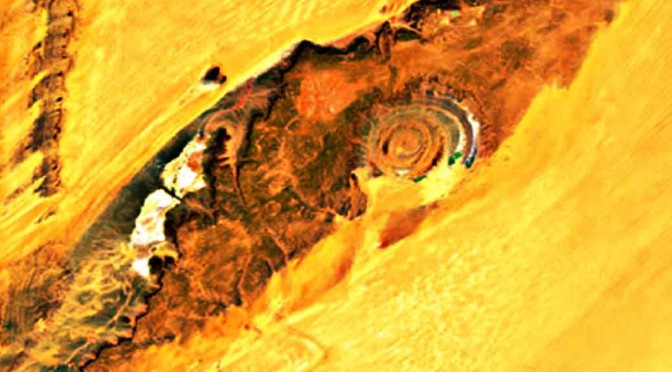By Anupum Pant
Unlike the great wall of China, this huge eye-like geological formation in the Sahara desert is actually visible from the space. In fact, it wasn’t even discovered before the space age.
The Richat Structure, or as some say, eye of the Sahara, is a deeply eroded and a slightly elliptical formation in the Sahara desert near Ouadane, west–central Mauritania. The whole structure is approximately 50 km wide and has several concentric formations. Since it is so large, it wasn’t identified till the astronauts saw it from the space. Here’s a google satellite image of the structure.
Some other times, people have also called it the Blue eye of Africa. That is because in some images taken by the NASA, the geological formation looks blue in colour.
Although the formation itself is an incredible thing to watch, there’s something more astounding about it. No one till date has been able to explain the reason behind the formation of this huge blue eye in the centre of the desert.
Since the formation is very circular (not too elliptical), some say that it was formed due to a asteroid strike. That theory however has been debunked and it was said that it was probably formed due to a volcanic eruption. And as there is no evidence of any igneous or volcanic rock in that place, the volcanic eruption theory doesn’t work too.
Other interesting point of view is that the almost equidistant concentric rings from the centre might be so symmetrical because they were probably man-made. Also, the whole formation seems to fit the description of Atlantis given by Plato. Although it seems highly improbable that this was the city of Atlantis, it is still a very interesting way to look at it.
Anyway, there’s a lot to be studied about it, but the inaccessibility of the place makes it harder. Maybe in the near future, scientists might be able to find what actually caused this geological formation.
via [GigalResearch]

